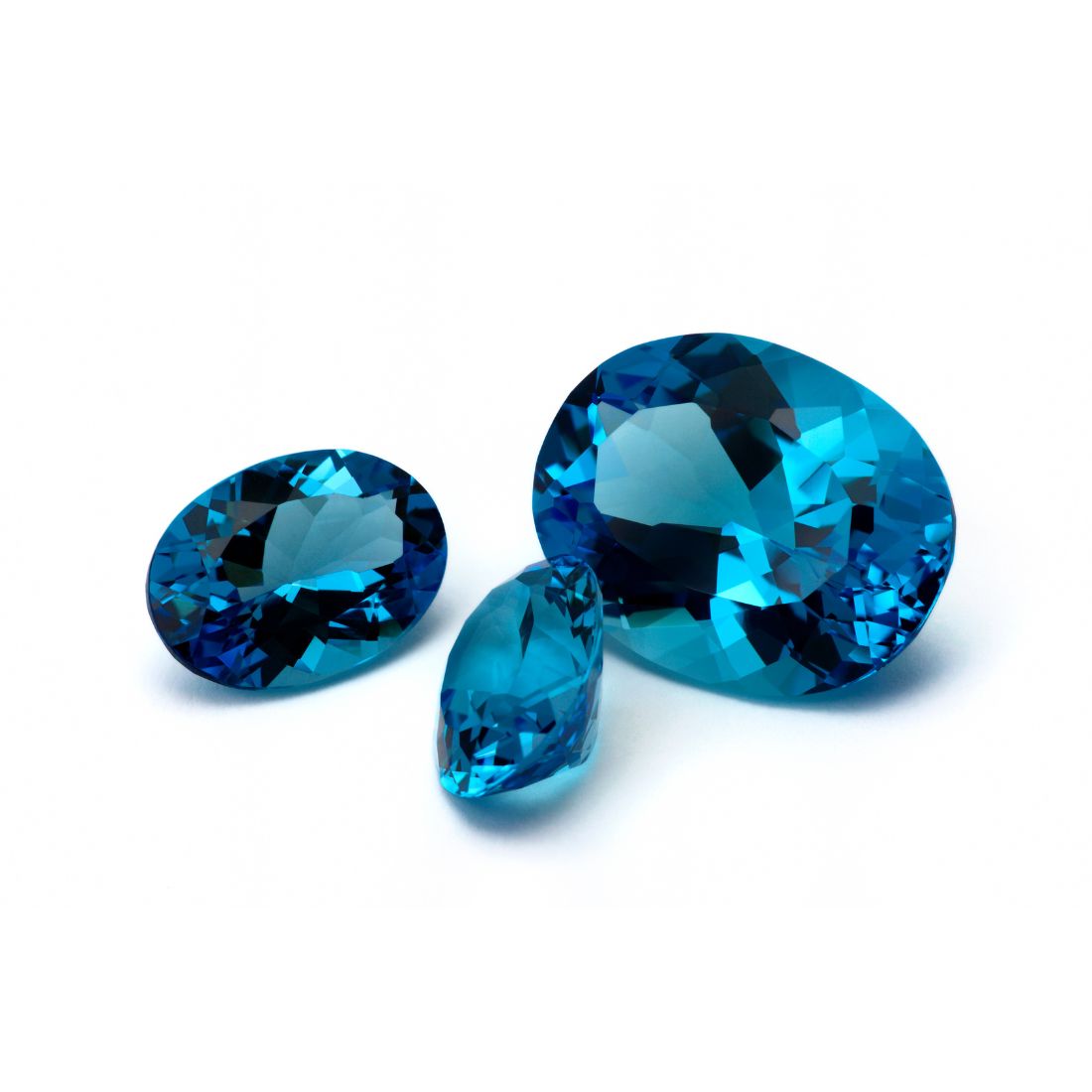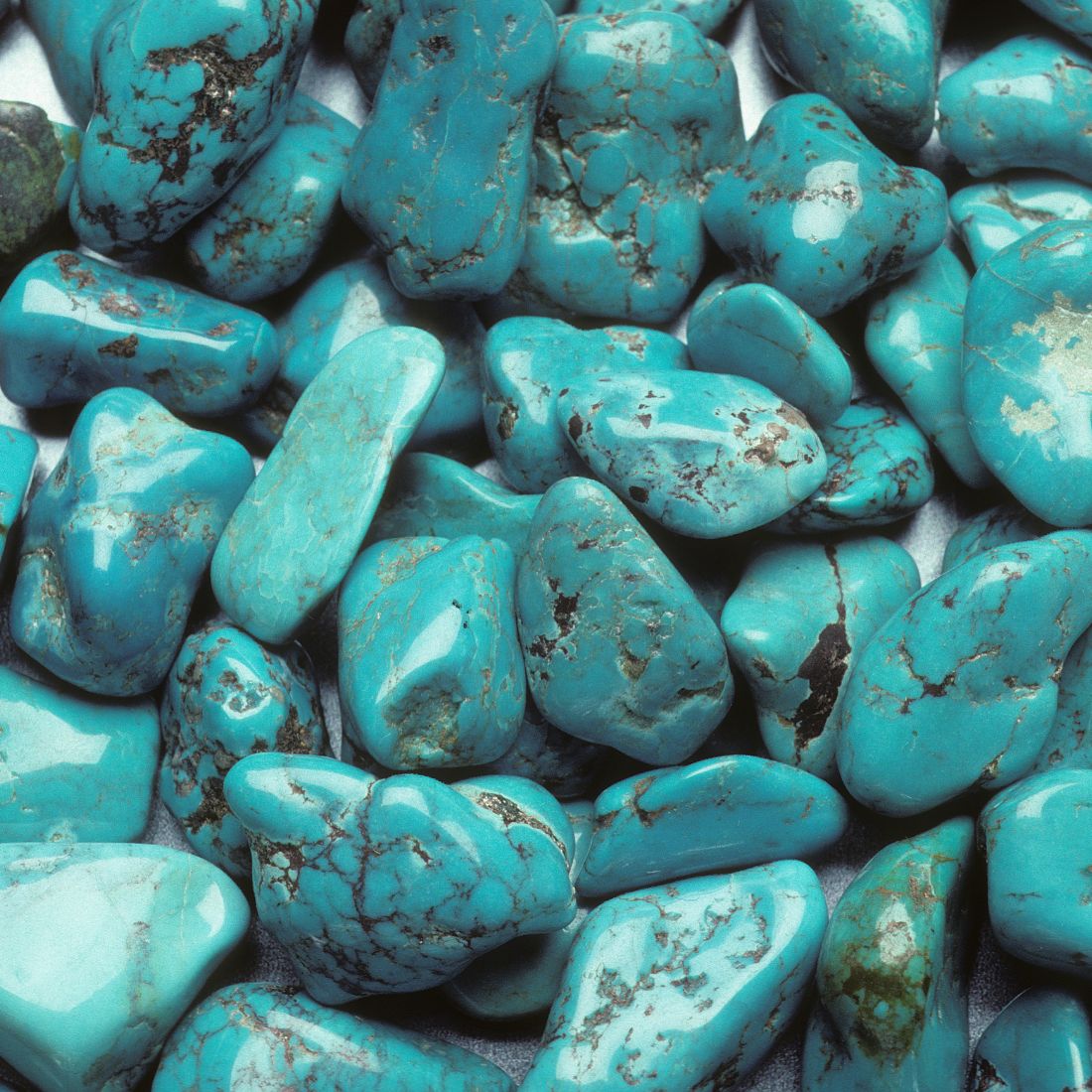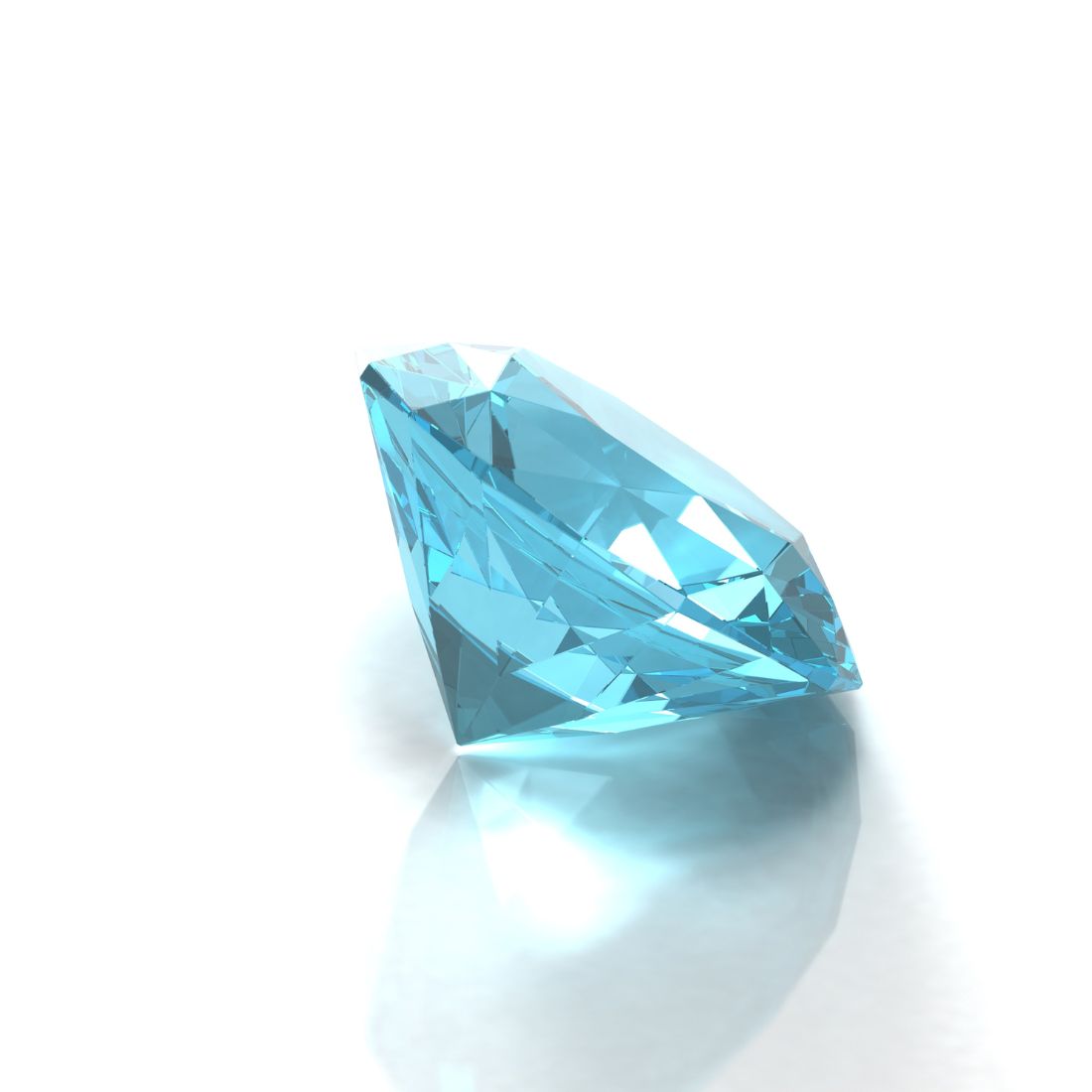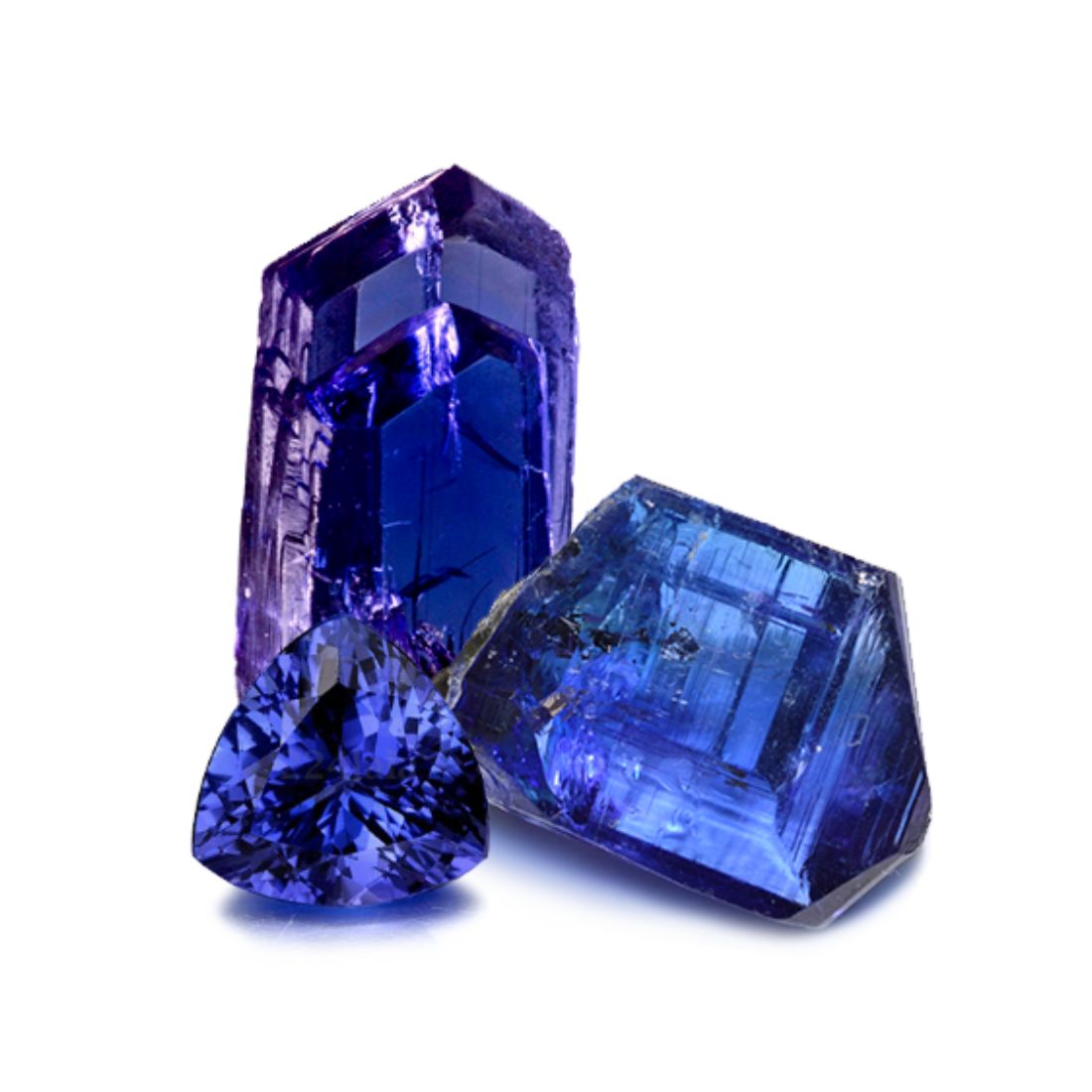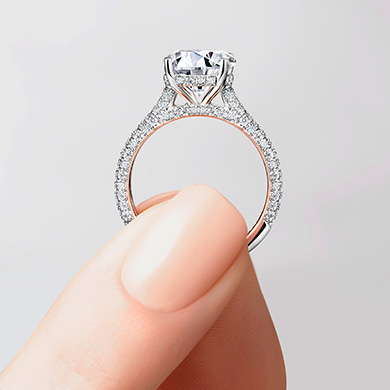December birthstones capture the shimmering beauty of the season, perfectly reflecting its icy, enchanting charm. Unlike many months that boast a single birthstone, December offers a stunning array of gemstones to choose from: blue topaz, turquoise, zircon, and tanzanite. Each of these stones has its own unique story, properties, and symbolism, making December one of the most versatile months for birthstone jewelry. Whether you’re drawn to the serene blue of topaz, the historic allure of turquoise, the brilliance of zircon, or the velvety violet hues of tanzanite, these gems embody elegance and individuality.
More than just beautiful stones, December’s birthstones carry deep symbolic meaning and fascinating histories that span centuries. From turquoise’s ancient roots in protective talismans to tanzanite’s relatively modern discovery in the foothills of Mount Kilimanjaro, these gemstones offer a connection to different times and cultures. Their diverse colors, ranging from vivid blues to calming purples, evoke the cool tones of winter, making them a perfect representation of December’s wintry landscapes and festive celebrations.
Whether you’re searching for the perfect gift, looking to celebrate your December birthday, or adding a personal touch to your jewelry collection, these birthstones offer endless possibilities. From everyday wear to statement pieces, December’s birthstones shine brightly in any setting. This guide explores their technical properties, historical significance, and styling versatility, helping you find the ideal gemstone to suit your style and tell your story.

(from top to bottom) Auravie Honeycomb Diamond Earrings – ERS1018, Auravie Shell Scallop Diamond Ring – RS1015, Diamond Tennis Necklace – NL904, Auravie Ribbed Diamond Ring – RS1013, Auravie Scalloped Open Diamond Ring – RS1011, Auravie Shell Shapes Diamond Bangle – BGS1066, Auravie Scalloped Diamond Bangle – BGS1011, and Auravie Ribbed Diamond Bangle – BGS1013
What Are Birthstones and When Did They Become Popular?
Birthstones are gemstones traditionally associated with each month of the year, believed to carry unique meanings, energies, and properties. For centuries, these stones have been worn as symbols of personal identity, spiritual connection, and even good fortune. Today, birthstones remain a popular way for people to celebrate their birth month or carry a piece of their heritage and personality with them.
The origins of birthstones can be traced back to ancient civilizations. Many historians link the concept to the Biblical “Breastplate of Aaron,” a ceremonial religious garment described in the Book of Exodus. This breastplate was adorned with twelve gemstones, each symbolizing one of the twelve tribes of Israel. These stones were later associated with the twelve signs of the zodiac and eventually with the twelve months of the year.
Birthstones as we know them today became more structured in the 18th century, thanks to gem traders in Poland who established a list correlating gemstones with calendar months. However, the modern birthstone tradition gained widespread popularity in 1912 when the American National Retail Jewelers Association (now Jewelers of America) created an official list of birthstones. This standardized list solidified the tradition, making it easier for jewelers and customers alike to celebrate birth months with specific gemstones.
Since then, birthstones have grown in cultural significance and consumer appeal. They’ve been embraced not just for their beauty but for the emotional and symbolic value they hold. Whether given as meaningful gifts or worn as personal talismans, birthstones connect us to history, spirituality, and individuality.
This tradition continues to evolve, with alternative gemstones and additional birthstones added over time to reflect modern tastes and preferences. For example, December boasts several recognized birthstones—blue topaz, turquoise, zircon, and tanzanite—allowing individuals to choose the stone that resonates most with them. Birthstones have become a timeless and versatile way to celebrate life’s milestones, blending personal meaning with stunning jewelry design.

(from top to bottom) Auravie Shell Sculpted Earrings – ERS1019, Auravie Shell Shapes Diamond Ring – RS1066, Auravie Curved Diamond Ring – RS1012, Auravie Shell Shapes Diamond Paperclip Necklace – NS1066, Auravie Two Tone Diamond Ring – RS1002, Auravie Scalloped Open Diamond Ring – RS1011, and Auravie Ribbed Diamond Bangle – BGS1013
Blue Topaz
Technical Properties
Blue topaz is a stunning gemstone prized for its brilliance, durability, and range of breathtaking blue hues. As a silicate mineral composed of aluminum and fluorine, blue topaz has a hardness of 8 on the Mohs scale, making it one of the hardest gemstones available. Its durability makes it a reliable choice for everyday wear, whether in rings, necklaces, bracelets, or earrings. However, like all gemstones, blue topaz must be handled with care as it has perfect cleavage, meaning it can split or chip if subjected to hard impacts.
Natural blue topaz is rare and usually very pale in color. Most blue topaz on the market today achieves its vibrant shades through a process that involves treating colorless topaz with irradiation followed by heat. This treatment creates three primary hues: Sky Blue, a soft, light blue reminiscent of a clear summer sky; Swiss Blue, a vivid and energetic blue with electric undertones; and London Blue, a deep, moody blue that is almost teal. Each shade offers a unique aesthetic appeal, giving blue topaz versatility across different styles and occasions.
With its exceptional clarity and brilliance, blue topaz stands out as a luminous and affordable alternative to more expensive blue gemstones, such as sapphires or aquamarines. Its high refractive index enhances its ability to sparkle, making it an attractive centerpiece for jewelry.
Historical Significance
Blue topaz has a rich history that stretches back thousands of years, with its name thought to derive from the Sanskrit word “tapas,” meaning fire, or the ancient Greek island of Topazios, where it was first discovered. In ancient times, topaz was believed to possess protective and healing powers. The Greeks associated it with strength and vitality, believing it could increase physical endurance and fortitude. During the Middle Ages, topaz gained a reputation as a stone of protection, thought to dispel anger, break magical spells, and guard against harm.
Although blue topaz specifically rose to prominence in more modern times due to the development of color enhancement treatments, its association with calmness and communication has become widely recognized. Today, it continues to be cherished for its soothing energy and connection to emotional well-being.
Symbolism
Blue topaz is deeply symbolic, embodying qualities of peace, clarity, and self-expression. Its serene blue tones are often linked to calmness and emotional balance, making it a stone for reducing stress and promoting a sense of tranquility. Many believe blue topaz helps its wearer articulate thoughts clearly and confidently, making it a popular gemstone for those seeking to improve communication and strengthen relationships.
As a December birthstone, blue topaz also represents love, loyalty, and lifelong connections. It is often gifted as a token of affection, symbolizing a bond that is steady and enduring. Additionally, its association with clarity and wisdom makes it a meaningful choice for those embarking on new ventures or seeking inspiration in their personal or professional lives.
Astrological and Spiritual Connections
For those drawn to the metaphysical, blue topaz is celebrated for its spiritual and astrological significance. This serene gemstone is often associated with the zodiac signs Sagittarius and Capricorn, which align with December birthdays. It is thought to amplify the traits of these signs, such as wisdom, clarity, and ambition, while soothing any restlessness or emotional turbulence. On a spiritual level, blue topaz is believed to resonate with the throat chakra, enhancing self-expression and communication. Many believe it helps clear mental blocks, allowing wearers to articulate their thoughts with confidence and authenticity. Blue topaz is also said to promote inner peace and balance, making it a powerful stone for meditation and emotional healing. Its calming energy fosters a sense of clarity and focus, making it a favorite for those seeking harmony in both mind and spirit.

(from top to bottom) Auravie Shell Shaped Two Tone Diamond Hoop Earrings – ERS1032, Auravie Shell Honeycomb Diamond Ring – RS1009, Auravie Curved Diamond Ring – RS1012, and Diamond Tennis Necklace – NL904
Styling with Blue Topaz
Blue topaz’s versatile beauty makes it an exceptional choice for all types of jewelry. Its range of shades allows it to complement both subtle and bold designs. Sky Blue Topaz, with its soft, pastel hue, works beautifully in delicate and minimalist settings, perfect for daytime wear or casual occasions. Swiss Blue Topaz, with its vibrant, eye-catching color, pairs well with modern designs and adds a playful yet sophisticated pop of color to any outfit. For a more formal or dramatic look, London Blue Topaz exudes elegance and sophistication, especially when paired with diamonds or set in white gold or platinum.
Blue topaz is particularly striking in statement rings, where its brilliant sparkle can take center stage. Pendant necklaces featuring blue topaz make elegant gifts and personal keepsakes, while stud earrings or dangle designs can brighten any ensemble. Its cool blue tones also complement winter and holiday styles, making blue topaz jewelry a thoughtful and timeless gift for the season.
Whether styled for everyday wear or reserved for special occasions, blue topaz offers a timeless appeal that suits all tastes. It bridges the gap between luxury and accessibility, ensuring that everyone can enjoy its stunning beauty and meaningful symbolism.
Caring for Blue Topaz
Proper care is essential to maintain the beauty and brilliance of blue topaz. Although it ranks high on the Mohs scale with a hardness of 8, blue topaz is not immune to damage. Its perfect cleavage makes it susceptible to chipping or splitting if subjected to sharp impacts. To clean blue topaz, use warm, soapy water and a soft brush, gently scrubbing to remove dirt and oils. Avoid ultrasonic cleaners and harsh chemicals, as they may affect treated stones or damage the surface. When storing blue topaz jewelry, keep it in a soft pouch or a separate compartment in a jewelry box to prevent scratches from harder gemstones. It’s also a good idea to remove blue topaz jewelry during rigorous activities or household tasks that could expose it to knocks or abrasions. With these simple precautions, blue topaz can remain a cherished and radiant part of your collection for years to come.
Turquoise
Technical Properties
Turquoise is one of the oldest and most beloved gemstones, known for its distinct and vibrant colors that range from robin’s egg blue to greenish-blue. This opaque gemstone is a hydrated phosphate of copper and aluminum, and its unique coloring is a result of trace elements, primarily copper, within its mineral structure. Turquoise is relatively soft, with a hardness of 5 to 6 on the Mohs scale, making it more delicate than other December birthstones. Its porous nature means it can absorb oils, chemicals, and other substances, which may affect its color over time.
One of turquoise’s most striking qualities is its matrix, a network of veins or patterns within the stone caused by the host rock. These patterns, ranging from black to brown, are unique to each piece of turquoise and often add to the stone’s charm and individuality. Because of its softness, turquoise is often stabilized—a process that enhances its durability and protects its surface from damage.
Natural turquoise is increasingly rare, especially those of high quality with intense color and minimal matrix. The most prized varieties come from regions like Iran, where the famous Persian turquoise is mined, and the southwestern United States, known for its striking sky-blue hues.
Historical Significance
Turquoise holds an extraordinary place in history, revered by civilizations for thousands of years. The gemstone was one of the first to be mined, with evidence of turquoise mining dating back to 6,000 BCE in Egypt’s Sinai Peninsula. The ancient Egyptians used turquoise extensively in jewelry, ornaments, and ceremonial objects, believing it to bring protection and power. The famous burial mask of King Tutankhamun features turquoise inlays, underscoring its significance in their culture.
In Native American cultures, turquoise is considered sacred. Tribes such as the Navajo, Hopi, and Zuni used turquoise in amulets, carvings, and intricate silver jewelry. It was often referred to as the “stone of life,” believed to protect warriors in battle and ensure safe passage during travel. Turquoise also played a role in rituals and ceremonies, symbolizing a connection between earth and sky.
Throughout history, turquoise has been associated with royalty, protection, and spiritual harmony. Ancient Persians believed the gemstone could ward off the “evil eye,” and turquoise was often set in crowns, swords, and shields. Its universal appeal spans continents and centuries, making it a timeless and culturally rich gemstone.
Symbolism
Turquoise is a stone deeply connected to protection, healing, and spiritual growth. It is often referred to as the “stone of protection” for its reputed ability to shield its wearer from harm and negative energies. Many cultures believed turquoise could bring good fortune, health, and peace.
Its calming blue-green hues are tied to tranquility, making it a stone for promoting emotional balance and reducing stress. Turquoise is also thought to foster clear communication, helping wearers express their thoughts and feelings more openly. For this reason, it is sometimes called the “stone of truth.”
Additionally, turquoise is considered a symbol of friendship and trust. It is often exchanged as a token of lasting connections and loyalty, making it a popular choice for meaningful gifts. Its ability to connect the wearer with the natural world further enhances its reputation as a stone of grounding and spiritual harmony.
Astrological and Spiritual Connections
Turquoise holds a significant place in metaphysical traditions, revered as a stone of protection and spiritual attunement. It is most closely associated with Sagittarius, the zodiac sign linked to adventure and optimism, and is believed to align with the heart and throat chakras. Turquoise is said to enhance communication and self-expression, helping individuals speak their truth with confidence and clarity. Its connection to the heart chakra fosters compassion and emotional balance, promoting healthy relationships and inner peace. Spiritually, turquoise is thought to bridge the gap between the physical and spiritual realms, aiding in meditation and grounding practices. It has long been considered a talisman for travelers, offering protection and good fortune on life’s journeys.

(from left to right) Auravie Shell Shapes Diamond Bangle – BGS1066, Auravie Two Tone Diamond Bangle – BGS1002, Auravie Curved Diamond Ring – RS1012, Auravie Scalloped Open Diamond Ring – RS1011, Diamond Tennis Necklace – NL902, Auravie Shell Scallop Diamond Earrings – ERS1033, Auravie Shell Honeycomb Diamond Ring – RS1018, V Shaped Graduated Diamond Tennis Necklace – NL901, Auravie Shell Scallop Diamond Bangle – BGS1015, Auravie Scalloped Diamond Bangle – BGS1011, Auravie Shell Scallop Diamond Ring – RS1015
Styling with Turquoise
Turquoise’s bold and earthy aesthetic makes it a standout choice for jewelry that embodies individuality and style. Its vibrant colors and unique matrix patterns give turquoise a one-of-a-kind quality, making it especially popular in statement pieces.
Large turquoise rings or cuff bracelets are iconic designs, often set in sterling silver to enhance the gemstone’s natural beauty. Southwestern and Native American-inspired styles remain popular, with turquoise often paired with intricate silverwork for a rustic, timeless look.
For a modern twist, turquoise can be incorporated into minimalist designs. Simple pendants, studs, or bead necklaces allow the stone’s striking color to take center stage. Turquoise also pairs beautifully with warm-toned metals like gold or rose gold, adding a touch of elegance to its earthy appeal.
Turquoise is incredibly versatile and can complement a wide range of outfits. It adds a pop of color to neutral tones and pairs beautifully with casual, bohemian, or vintage-inspired styles. For formal occasions, turquoise paired with diamonds or other precious stones creates a unique, sophisticated look.
Caring for Turquoise
Because of its softness and porosity, turquoise requires special care to maintain its beauty and integrity. To clean turquoise, use a soft, damp cloth and avoid harsh chemicals, detergents, or ultrasonic cleaners, which can damage the stone. It is important to protect turquoise from prolonged exposure to oils, perfumes, and lotions, as these substances can discolor the gemstone over time.
When storing turquoise jewelry, keep it separate from harder gemstones to avoid scratches. It’s best to store turquoise in a cool, dry place away from direct sunlight or extreme heat, as these can cause the stone to dry out or crack. With proper care, turquoise jewelry can remain vibrant and beautiful for generations, continuing to tell its timeless story.
Turquoise’s rich history, striking beauty, and deep symbolism make it a cherished gemstone that stands the test of time. Whether you prefer bold, traditional designs or sleek, modern pieces, turquoise offers a world of possibilities for those seeking jewelry with character and meaning.
Zircon
Technical Properties
Zircon is a naturally occurring gemstone admired for its extraordinary brilliance and fire, rivaling that of diamonds. It is often mistaken for synthetic cubic zirconia, but zircon is an entirely natural mineral with a rich geological history. Zircon comes in a variety of colors, including red, yellow, green, and brown, but blue zircon is the most popular choice for December birthstones.
With a hardness of 6 to 7.5 on the Mohs scale, zircon is durable enough for most jewelry but requires careful handling to avoid chipping or abrasion. The gemstone owes its remarkable sparkle to its high refractive index and strong dispersion, which create flashes of light and color within the stone. This optical brilliance makes zircon a standout in any piece of jewelry, especially when expertly cut.
Blue zircon achieves its vibrant color through a heat treatment process applied to certain zircon varieties. This treatment enhances the stone’s natural hues, resulting in a captivating blue that ranges from pale aquamarine to rich teal. Despite its relatively low hardness compared to other December birthstones, zircon’s dazzling beauty and affordability make it a popular and accessible gemstone for both casual and formal jewelry.
Historical Significance
Zircon has been cherished for thousands of years, with evidence of its use dating back to ancient times. In antiquity, zircon was valued for its brilliance and often used in royal and ceremonial jewelry. Its wide range of colors made it a versatile choice for decorative pieces across cultures and eras.
In the Middle Ages, zircon was believed to have protective powers, including the ability to ward off evil and promote restful sleep. It was often worn as a talisman or amulet to ensure safety during travel and to inspire spiritual growth. Its golden and reddish varieties were particularly popular in Renaissance jewelry, symbolizing wealth and status.
Blue zircon gained prominence in the Victorian era, when it became a favorite among jewelers for its captivating sparkle and elegant blue hue. Its use in intricate brooches, pendants, and rings helped cement its place as a gemstone of sophistication and charm.
Symbolism
Zircon is often associated with wisdom, prosperity, and spiritual growth. Its brilliance and clarity make it a symbol of purity and honesty, reflecting the importance of clear intentions and truthful communication. Blue zircon, in particular, is linked to tranquility and balance, helping to calm the mind and promote inner peace.
In addition to its calming properties, zircon is thought to inspire self-confidence and creativity, making it a meaningful gemstone for those embarking on new ventures or seeking to overcome challenges. Its association with restful sleep and protection has made it a popular gift for loved ones, symbolizing care and well-being.
Zircon is also regarded as a stone of prosperity, believed to attract abundance and success. This combination of beauty, symbolism, and affordability makes zircon a meaningful choice for both personal and celebratory jewelry.
Astrological and Spiritual Connections
Zircon is a gemstone of wisdom and spiritual grounding, often associated with the zodiac sign Sagittarius. Known for its calming energy, blue zircon in particular is believed to align with the throat and third eye chakras, enhancing intuition, communication, and mental clarity. Many spiritual practitioners regard zircon as a stone of balance, capable of harmonizing physical and emotional energies while fostering a sense of inner peace. Its grounding properties make it a powerful tool for meditation, helping individuals connect with their higher selves and unlock spiritual insights. Zircon is also thought to aid in restful sleep and protection, shielding its wearer from negative energy and enhancing a sense of security and well-being.
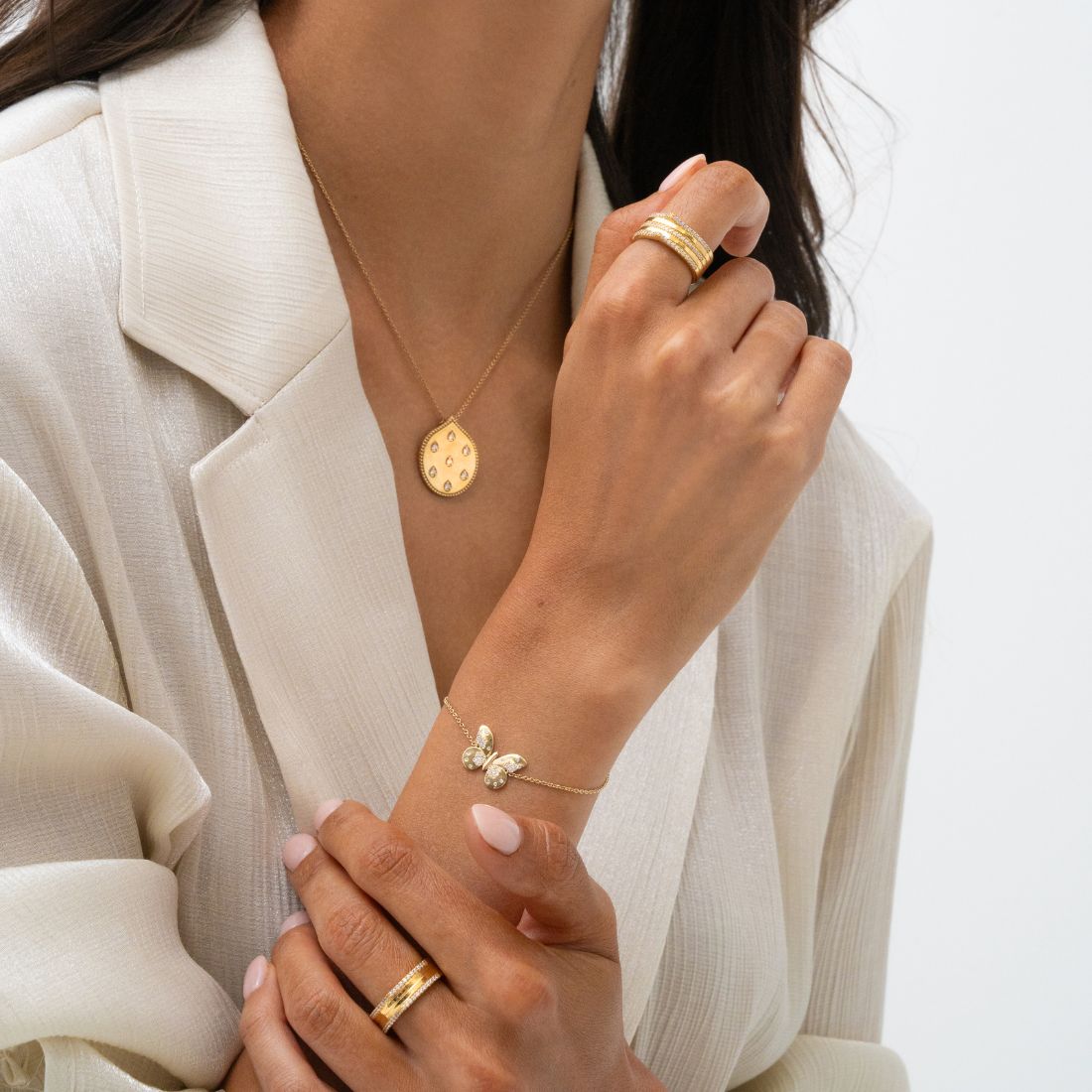
(from top to bottom) Shell Héritage Shell Tip Diamond Ring – RS1023, Shell Héritage Shell Spaced Diamond Pendant – PS1023, Shell Héritage Diamond Butterfly Chain Bracelet – BRS1035, and Shell Héritage Shell Tip Diamond Ring – RS1022
Styling with Zircon
The brilliance of zircon makes it a versatile gemstone for a variety of jewelry styles. Blue zircon, with its radiant sparkle and cool blue hues, pairs beautifully with both silver and white gold settings, enhancing its icy, wintry aesthetic. It is a popular choice for elegant drop earrings, pendants, and rings that make a statement without being overly flashy.
For formal occasions, blue zircon adds a touch of glamour when paired with diamonds or other white stones. The combination enhances its brilliance, making it a dazzling centerpiece in high-end jewelry designs. Meanwhile, lighter blue zircons work well in more delicate and minimalist settings, offering a sophisticated yet understated option for everyday wear.
Zircon’s versatility extends to mixed-metal designs, where it complements both warm and cool tones. For a modern look, blue zircon can be incorporated into geometric or abstract settings, while vintage-inspired designs highlight its timeless appeal. Its affordability also makes it an excellent choice for stacking rings, cluster earrings, or multi-stone bracelets.
Caring for Zircon
Zircon’s relative softness compared to other December birthstones means it requires careful handling to maintain its brilliance. To clean zircon, use warm, soapy water and a soft brush to gently remove dirt and grime. Avoid ultrasonic cleaners and harsh chemicals, as they may cause damage to the stone’s surface.
When storing zircon jewelry, keep it in a padded compartment or a separate pouch to prevent scratches from harder gemstones. Zircon is also sensitive to prolonged exposure to heat and sunlight, which can alter its color or reduce its brilliance. Removing zircon jewelry during rigorous activities or household tasks can help protect it from chips or abrasions.
With proper care, zircon jewelry can maintain its stunning sparkle and remain a cherished part of any collection. Its rich history, symbolic meaning, and breathtaking beauty ensure that zircon continues to captivate wearers and collectors alike.
Tanzanite
Technical Properties
Tanzanite is a rare and exquisite gemstone celebrated for its unique blue-violet hues. Discovered in the 1960s near Mount Kilimanjaro in Tanzania, it is found in only one location on Earth, making it one of the most exclusive gemstones in the world. Tanzanite’s striking colors are a result of trace amounts of vanadium within its crystal structure, which creates a captivating interplay of blue and violet tones depending on the angle of light.
With a hardness of 6 to 7 on the Mohs scale, tanzanite is softer than other December birthstones like blue topaz or zircon. This makes it more susceptible to scratches and chipping, requiring careful handling. Its relative fragility is balanced by its stunning beauty and versatility, as it can be cut into a variety of shapes that enhance its brilliance.
Tanzanite is also known for its pleochroic nature, meaning it displays different colors—blue, violet, and even hints of burgundy—when viewed from different angles. To bring out its most vibrant hues, tanzanite is typically heat-treated, a process that enhances its signature colors by removing any natural brownish tones.
Historical Significance
Though relatively new to the world of gemstones, tanzanite has rapidly gained cultural and historical significance. Discovered in 1967 by a Maasai herder near Mount Kilimanjaro, it was introduced to the global market by Tiffany & Co., which named it “tanzanite” in honor of its country of origin. The gemstone’s unique beauty and rarity quickly captured the attention of jewelers and collectors, cementing its place as one of the most sought-after modern gemstones.
In Tanzanian culture, tanzanite holds special meaning. The Maasai people consider it a stone of new beginnings and often gift it to newborns or their mothers as a symbol of life, health, and prosperity. Its discovery near one of Africa’s most iconic landmarks has also made it a symbol of African heritage and natural beauty.
Symbolism
Tanzanite is a gemstone of transformation and spiritual growth. Its mesmerizing blue and violet hues are often associated with calmness, creativity, and self-expression. Many believe it encourages intuition and introspection, helping wearers gain clarity and make thoughtful decisions.
The gemstone is also thought to inspire emotional balance, reducing stress and promoting a sense of peace. Its association with new beginnings makes it a meaningful gift for milestones such as birthdays, anniversaries, or the birth of a child. Tanzanite’s ability to bridge the gap between intellect and emotion makes it a powerful stone for fostering harmony and deeper connections.
Astrological and Spiritual Connections
Tanzanite is a gemstone deeply connected to transformation and higher consciousness. It is often associated with the zodiac sign Sagittarius and resonates strongly with the third eye and crown chakras. Tanzanite is believed to open the mind to spiritual awareness, fostering intuition, wisdom, and self-discovery. Many view it as a stone of enlightenment, helping its wearer navigate change and personal growth with clarity and purpose. The soothing energy of tanzanite promotes emotional balance and harmony, making it a favorite for meditation and stress relief. It is also thought to enhance creativity and self-expression, making it an inspiring choice for artists and innovators. Tanzanite’s connection to the crown chakra ties it to spiritual ascension and alignment with one’s higher purpose, making it a gemstone of profound meaning and beauty.

(from left to right) Shell Héritage Spaced Shell Paperclip Bracelet – BRS1027, Shell Héritage Diamond Pendant – PS1028, Shell Héritage Linked Shell Diamond Necklace – NS1028, Shell Héritage Shell Tip Diamond Ring – RS1023, Shell Héritage Diamond Hoop Earrings – HPS1009, Shell Héritage Shell Duo Diamond Earrings – ERS1035, Shell Héritage Shell Tip Diamond Ring – RS1022, and Shell Héritage Diamond Pendant – PS1029
Styling with Tanzanite
Tanzanite’s rich, velvety hues make it an exceptional choice for both statement pieces and delicate designs. Its dual-tone nature allows it to transition effortlessly between day and evening wear, offering versatility for any wardrobe.
For formal occasions, tanzanite is stunning when paired with diamonds or other white stones, creating a sophisticated and glamorous look. Set in white gold or platinum, tanzanite’s vibrant colors take on a cool, icy appearance that is perfect for winter-themed or holiday jewelry. Large, faceted tanzanite stones work beautifully in cocktail rings or drop earrings, where their brilliance and color can truly shine.
For more casual or everyday styles, smaller tanzanite stones are perfect for stud earrings, simple pendants, or stackable rings. The gemstone’s ability to complement a variety of metals—such as rose gold for a warm contrast or yellow gold for a regal touch—makes it adaptable to modern and vintage-inspired designs alike.
Tanzanite is particularly well-suited for heirloom jewelry due to its rarity and symbolic value. Whether used as a centerpiece for a necklace or as an accent stone in a multigem design, tanzanite offers a luxurious and meaningful touch to any piece.
Caring for Tanzanite
Tanzanite’s relative softness compared to other gemstones requires careful handling to preserve its beauty and structure. Avoid exposing tanzanite to sudden temperature changes or high heat, as these conditions can weaken the stone or alter its color.
To clean tanzanite, use warm, soapy water and a soft cloth or brush, gently wiping away dirt and oils. Harsh chemicals, ultrasonic cleaners, or steam cleaning should be avoided, as they can damage the gemstone. After cleaning, dry the jewelry with a soft cloth and store it in a padded compartment or separate pouch to prevent scratches from harder gemstones.
It’s advisable to remove tanzanite jewelry before engaging in physical activities, household chores, or any task that could expose the gemstone to hard knocks or abrasions. By following these care tips, tanzanite can remain a cherished and radiant part of your collection for generations.
Buying Guide for Birthstone Jewelry
Choosing birthstone jewelry is a meaningful and exciting process, but it helps to know what to look for to ensure you’re selecting a piece that fits your style, budget, and occasion. This guide will walk you through the key factors to consider when purchasing birthstone jewelry, offering tips on quality, budget-friendly options, and personalization ideas.
What to Look For
When evaluating a birthstone’s quality, the “Four Cs”—cut, clarity, color, and carat weight—are essential considerations.
Cut: The cut of a gemstone affects how it reflects light, impacting its brilliance and sparkle. Look for a cut that enhances the stone’s natural beauty while maintaining symmetry and proportion. Popular cuts include round, oval, pear, and emerald, each offering a distinct aesthetic.
Clarity: Clarity refers to the absence of inclusions or flaws within the stone. While some inclusions are natural and add character, a high-quality gemstone will have minimal visible imperfections. Clarity is especially important for transparent stones like blue topaz, zircon, and tanzanite.
Color: The color of a birthstone is often its most defining feature. Rich, saturated hues are typically more desirable and valuable, but personal preference also plays a big role. For example, December’s birthstones range from the bright blue of turquoise to the deep violet-blue of tanzanite, offering options for every taste.
Carat Weight: Carat weight measures the size of the gemstone. While larger stones are more dramatic, smaller stones can be equally stunning when set in intricate or delicate designs. Consider the size that best fits your style and the intended use of the jewelry.

(from top to bottom) Shell Héritage Shell Tip Diamond Ring – RS1022, Shell Héritage Paperclip Diamond Toggle Bracelet – BRS1005, Shell Héritage Diamond Butterfly Necklace – NS1035, Shell Héritage Paperclip Diamond Toggle Necklace – NS1005, Shell Héritage Shell Tip Diamond Ring – RS1023, and Shell Héritage Spaced Shell Paperclip Bracelet – BRS1027
Budget Tips
Birthstone jewelry comes in a wide range of price points, so there’s something for every budget. For those seeking an affordable option, consider synthetic or lab-created gemstones. These stones are chemically and physically identical to their natural counterparts but come at a fraction of the cost. They’re an excellent choice for achieving the look of high-quality birthstone jewelry without overspending.
If you’re looking to invest in a natural gemstone, prioritize stones that are untreated or minimally treated. While treated gemstones can offer vibrant colors, untreated stones are often considered more valuable and authentic. Research the stone’s origin and certification to ensure you’re getting a genuine and ethically sourced gem.
For those who prefer a balance between quality and affordability, smaller natural stones or alternative varieties (e.g., Swiss blue topaz instead of Imperial topaz) can be an excellent choice.
Customizations
Personalizing birthstone jewelry adds a unique and sentimental touch, making it truly one of a kind. Here are some customization ideas to consider:
- Engraving: Add a special date, name, or message to commemorate a meaningful event or relationship. Engravings are especially popular for rings and pendants, adding an extra layer of sentimentality.
- Multiple Birthstones: Combine several birthstones in a single piece to represent family members, loved ones, or significant moments. Mother’s rings and family necklaces are popular designs that incorporate multiple stones.
- Custom Designs: Work with a jeweler to create a bespoke piece that reflects your personal style. Choose unique settings, mix metals, or pair your birthstone with complementary gemstones for a standout design.
- Layering and Stacking: Consider stacking multiple birthstone rings or layering necklaces with different stone sizes or styles. This modern trend allows you to showcase your birthstone in a playful and versatile way.
By focusing on quality, exploring budget-friendly options, and incorporating personalized details, you can find or design birthstone jewelry that is not only beautiful but also deeply meaningful. Whether you’re buying for yourself or as a gift, the perfect birthstone piece is one that tells a story and reflects your unique personality.
Conclusion: The Timeless Beauty of December Birthstones
December birthstones—blue topaz, turquoise, zircon, and tanzanite—offer a breathtaking array of colors, histories, and meanings. From the tranquil blues of blue topaz and zircon to the earthy elegance of turquoise and the velvety allure of tanzanite, these gemstones embody the beauty and spirit of December. Each stone has its unique charm, whether it’s the calming energy of blue topaz, the ancient protective powers of turquoise, the fiery brilliance of zircon, or the transformative symbolism of tanzanite.
These birthstones are more than just beautiful—they are steeped in rich traditions and cultural significance, making them meaningful gifts for loved ones or personal treasures for those born in December. Their versatility allows them to shine in a variety of styles, from bold statement pieces to delicate everyday jewelry. Whether you’re drawn to the symbolism of new beginnings, emotional balance, or wisdom, December’s gemstones provide a perfect way to reflect personal values and celebrate life’s special moments.
As you explore the world of December birthstones, remember the importance of thoughtful care to ensure their beauty endures. With proper attention and a sense of appreciation for their origins, these gemstones will remain timeless symbols of elegance and individuality for generations to come. Whatever your style or preference, December’s birthstones offer a piece of the month’s magic to carry with you always.
See Other Posts About Birthstones by Month
- January birthstones
- February birthstones
- March birthstones
- April birthstones
- May birthstones
- June birthstones
- July birthstones
- August birthstones
- September birthstones
- October birthstones
- November birthstones
Frequently Asked Questions About December Birthstones
What are the birthstones for December?
December has four recognized birthstones: blue topaz, turquoise, zircon, and tanzanite. Each offers unique colors, meanings, and histories, giving December-born individuals a range of options to celebrate their birth month.
Why does December have multiple birthstones?
December, like some other months, has multiple birthstones to provide variety and accommodate personal preferences, cultural traditions, and budget considerations. The addition of newer stones like tanzanite reflects evolving trends in the gemstone market.
What is the most popular December birthstone?
Blue topaz and turquoise are among the most popular December birthstones, valued for their stunning blue hues and rich symbolism. Tanzanite is also gaining popularity due to its rarity and luxurious appeal.
What are the spiritual properties of December birthstones?
- Blue topaz is associated with calmness, communication, and emotional balance.
- Turquoise is believed to offer protection, promote self-expression, and encourage compassion.
- Zircon is thought to enhance mental clarity, intuition, and grounding.
- Tanzanite is linked to transformation, spiritual growth, and creativity.
Which zodiac signs are associated with December birthstones?
Sagittarius (November 22–December 21) and Capricorn (December 22–January 19) are the zodiac signs for December. Blue topaz, turquoise, zircon, and tanzanite are believed to amplify the positive traits of these signs, such as wisdom, ambition, and adventurousness.
Are December birthstones suitable for everyday wear?
Blue topaz and zircon are durable options, with a hardness of 8 and 6–7.5 on the Mohs scale, respectively. Tanzanite and turquoise are softer and more delicate, requiring extra care to prevent scratches and damage during everyday use.
How do I care for my December birthstone jewelry?
Clean your stones with warm, soapy water and a soft cloth. Avoid harsh chemicals and ultrasonic cleaners, especially for turquoise and tanzanite. Store your jewelry in a separate pouch or compartment to prevent scratches and damage.
Are there affordable options for December birthstones?
Yes, lab-created or synthetic blue topaz and zircon offer budget-friendly alternatives while maintaining the same physical and chemical properties as natural stones. Turquoise and tanzanite are available in various grades to suit different price ranges.
Can I wear a December birthstone even if it’s not my birth month?
Absolutely! Birthstones are not restricted to those born in the corresponding month. Many people wear them for their beauty, symbolism, or personal significance.
What is the difference between zircon and cubic zirconia?
Zircon is a natural gemstone prized for its brilliance and fire, while cubic zirconia is a man-made material often used as a diamond simulant. Zircon is more valuable and has a rich geological history.
Is blue topaz naturally blue?
Most blue topaz on the market is treated. Natural blue topaz is rare and typically pale in color. Colorless topaz is irradiated and heat-treated to achieve vibrant blue shades like Sky Blue, Swiss Blue, and London Blue.
How can I tell if my turquoise is natural or treated?
Natural turquoise often has visible matrix patterns and a softer finish. Stabilized turquoise, which has been treated to enhance durability and color, is more common in the market. Reputable jewelers can provide certification for natural stones.
Why is tanzanite so rare?
Tanzanite is mined exclusively in one location near Mount Kilimanjaro in Tanzania, making it one of the most geographically limited gemstones. Its rarity and stunning blue-violet hues add to its value and allure.
What metals pair best with December birthstones?
- Blue topaz and zircon shine beautifully in silver, white gold, or platinum, enhancing their cool tones.
- Turquoise is often paired with sterling silver for a classic look or gold for a modern twist.
- Tanzanite looks stunning in white gold, platinum, or even rose gold for a warm contrast.
Are December birthstones a good investment?
While tanzanite and high-quality natural turquoise can appreciate in value due to their rarity, most birthstones are valued more for their beauty and personal significance than for investment purposes. Purchasing from reputable jewelers ensures authenticity and fair pricing.

